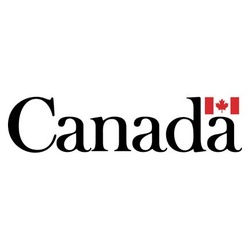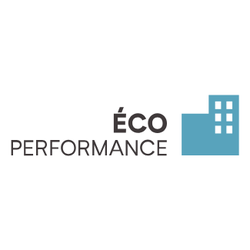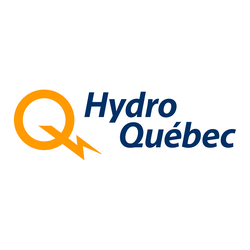
Community Interaction Program — Study/action projects
At a glance
- Maximum amount : 200,000 $
- Up to 70% of project cost
- Open Date : October 15, 2024
- Closing date : October 15, 2024
- Agriculture, forestry, fishing and hunting
- Other services (except public administration)
- Quebec
- Non-profit
- Public or Parapublic institution
- All revenue ranges
- All organization sizes
- Indigenous Peoples
- Research
- Environment
- Economic, Social and Community Development
- General public
- Indigenous peoples
- Rural / Remote communities
- Nonprofits / charities
- All structures
- Regional
- Provincial
Overview
Get up to $200,000 in funding for a study and action project pertaining to a specific environmental issue with the aim of identifying concrete actions to be taken in the fields.
Activities funded
This grant provides funding for community projects focused on conservation and improvement of the St. Lawrence ecosystem. Eligible activities aim at raising awareness, conducting scientific studies, implementing study-action projects, and undertaking restoration and protection efforts.
- Awareness-raising activities addressing specific environmental problems and targeting particular groups.
- Study projects developing a specific environmental issue through action plans and feasibility studies.
- Study-action projects that combine environmental studies with direct implementation of conservation actions.
- Restoration projects focusing on shoreline clean-up, habitat restoration, and water quality improvement.
- Protection projects conserving important areas and promoting sustainable uses of the St. Lawrence.
Eligibility
Eligibility for the Community Interaction Program is determined by specific criteria related to the nature and status of the applicant organization.
- The applicant must be a non-profit non-government organization legally constituted for at least one year with an established place of business in Quebec.
- The organization must have a charter under Quebec's Companies Act (Part III) or its equivalent.
- Indigenous communities are also eligible to apply.
- Individuals, departments, government agencies, municipalities, educational institutions, and private companies are not eligible.
Who is eligible?
Non-profit non-government organizations that have been legally constituted for at least one year and have an established place of business in Quebec are eligible to apply for the Community Interaction Program. Indigenous communities are also eligible to apply. However, individuals, departments, government agencies, municipalities, educational institutions, and private companies are not eligible to apply.Who is not eligible
This grant is specifically designed for non-profit non-government organizations and Indigenous communities, and thus excludes other types of entities. The restrictions ensure the focus remains on community-driven environmental actions.
- Individuals looking to apply on their own.
- Departments and government agencies.
- Municipalities seeking funding.
- Educational institutions aiming to undertake projects.
- Private companies wishing to engage in for-profit activities.
Eligible expenses
This funding program supports community-driven projects aimed at conserving the St. Lawrence ecosystem through various actions. Eligible initiatives include educational, research, and conservation activities that directly impact environmental restoration and protection.
- Awareness-raising projects targeting specific environmental issues and leading to actionable outcomes.
- Studies focusing on developing action plans for practical environmental solutions.
- Study-action projects that combine research with field implementation of conservation measures.
- Restoration projects focusing on shoreline stabilization, habitat restoration, and pollution reduction.
- Biodiversity protection projects aimed at conserving and maintaining sensitive areas and species.
Eligible geographic areas
This grant is available for projects implemented in specific regions connected to the St. Lawrence ecosystem. The eligible areas encompass a variety of significant ecological sites within Quebec.
- The area between Cornwall and Gaspé on the south shore, including the Québec portion of Chaleur Bay.
- The Magdalen Islands.
- The area between Carillon and Blanc Sablon on the north shore, including Anticosti Island and the Saguenay River.
- Main tributaries and sections of secondary tributaries essential to the St. Lawrence ecosystem.
Selection criteria
The evaluation and selection of projects for the Community Interaction Program (CIP) grant prioritize alignment with the program's objectives and effective implementation strategies.
- Contribution to the conservation and improvement of the St. Lawrence ecosystem.
- Demonstrated community support and involvement in the project.
- Clear articulation of the environmental problem and project rationale.
- Effectiveness of the proposed work plan and methodology.
- Quality and feasibility of the budget plan with a realistic financial estimate.
- Successful establishment of partnerships and collaboration with other entities.
- Expected outcomes and use of performance indicators to measure success.
- Sustainability of the environmental benefits post-project implementation.
How to apply
Eligibility Check
- Confirm that your organization is a non-governmental and non-profit organization or a legally constituted Indigenous community that has been in existence for at least one year and is located in Quebec.
- Verify the eligibility of your project against the criteria of the Community Interactions Program.
Initial Consultation
- Contact a project agent to confirm the eligibility of your project idea.
- Send, if desired, a preliminary proposal to obtain feedback from the agent.
Preparation of the request
- Write the presentation of your project following the guidelines of the application form.
- Include all necessary attachments (maps, photographs, letters of support, etc.).
- Calculate the eligible expenses and complete the budgeting planning table.
Formation of partnerships
- Identify and secure the necessary partnerships to support your project.
- Obtain letters of support from your partners, detailing their contributions in cash or in kind.
Submission of the request
Additional information
Here are additional miscellaneous information about the grant:
- The program encourages the involvement of as many people and partners as possible.
- Community support, identified needs, and benefits are considered for project assessment.
- Projects linked to Regional Integrated Management Plans (RIMPs) or other management plans are supported.
- Sufficient approvals and permits under applicable laws and regulations must be obtained to avoid delays.
- A project response is typically received 16 weeks after submission.
- The funding application must include detailed and comprehensive documents for assessment.
- There are two annual submission deadlines: March 1st and October 15th.
- Partnerships with the community are an important criterion for project assessment.
- The quality of the project is assessed on various criteria, including problem description, rationale, and community involvement.
- Sustainability tools should be put in place to ensure the long-term environmental benefits of the project.
Contacts
Frequently Asked Questions about the Community Interaction Program — Study/action projects Program
What is the Community Interaction Program — Study/action projects?
How much funding can be received?
What expenses are eligible under Community Interaction Program — Study/action projects?
What is the deadline to apply?
Is the Community Interaction Program — Study/action projects a grant, loan, or tax credit?
Who are the financial supporters of the Community Interaction Program — Study/action projects?
Who is eligible for the Community Interaction Program — Study/action projects program?
Who can I contact for more information about the Community Interaction Program — Study/action projects?
Where is the Community Interaction Program — Study/action projects available?
Are Indigenous Peoples eligible for the Community Interaction Program — Study/action projects program?
More programs like this

Support for biofood exports - individual projects
Ministry of Agriculture, Fisheries and Food (MAPAQ)
ÉcoPerformance — Recommissioning of building mechanical systems
Gouvernement du Québec
Panorama Program
Investissement Québec (IQ)
Financing to respond to the offensive of new tariffs and for initiatives for resilient and exporting companies (FRONTIERE)
Investissement Québec (IQ)
Program to support the development of agriculture and agri-food in the regions
Ministry of Agriculture, Fisheries and Food (MAPAQ)
Efficient Solutions Program — Agricultural Component
Hydro-Québec
PADAAR — Measure 4021 – Promotion of regional products
Ministry of Agriculture, Fisheries and Food (MAPAQ)
Support program for the development of reserved designations and promotional terms — Component 1
Ministry of Agriculture, Fisheries and Food (MAPAQ)
AgroPerformance – Stream 1 : Support for the agricultural sector in adopting agritechnologies
Gouvernement du Québec